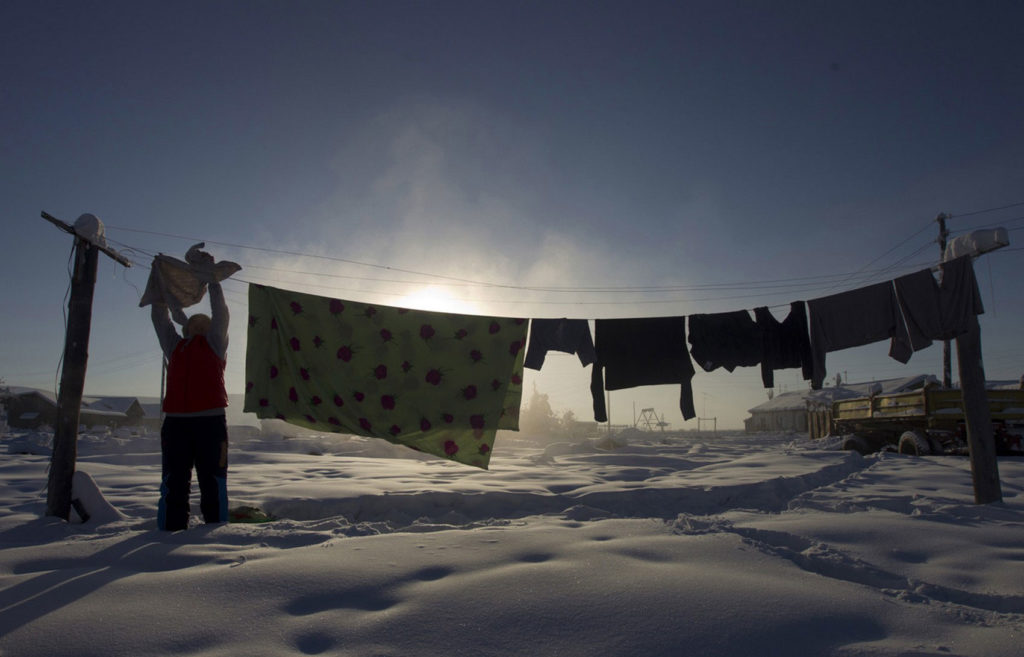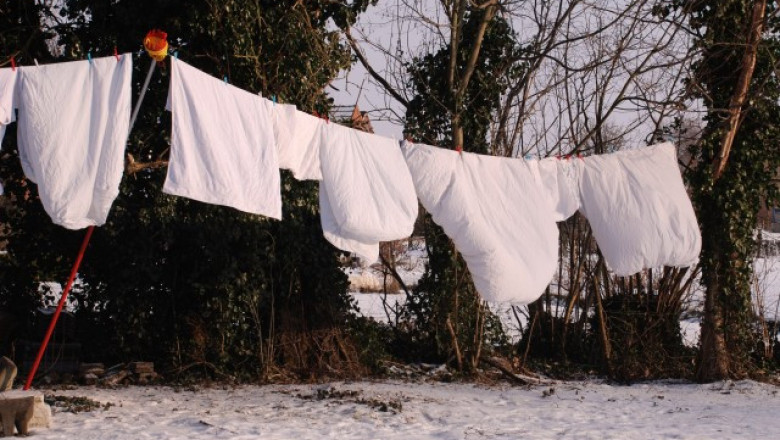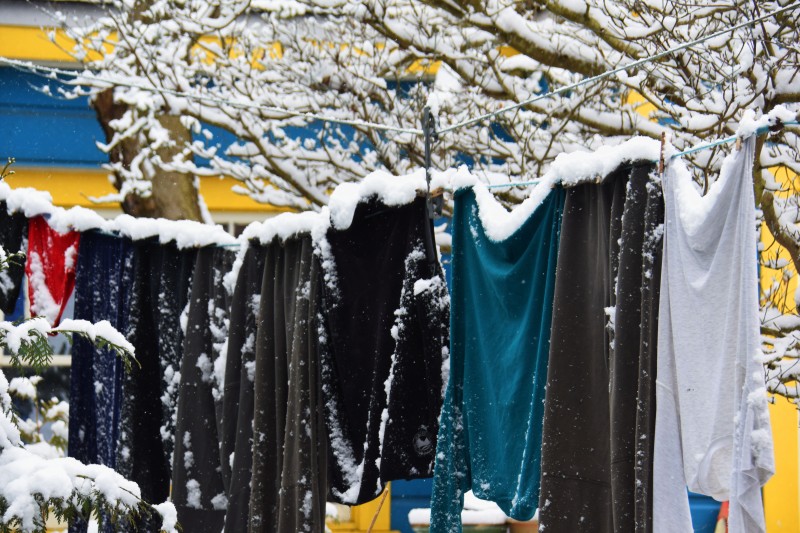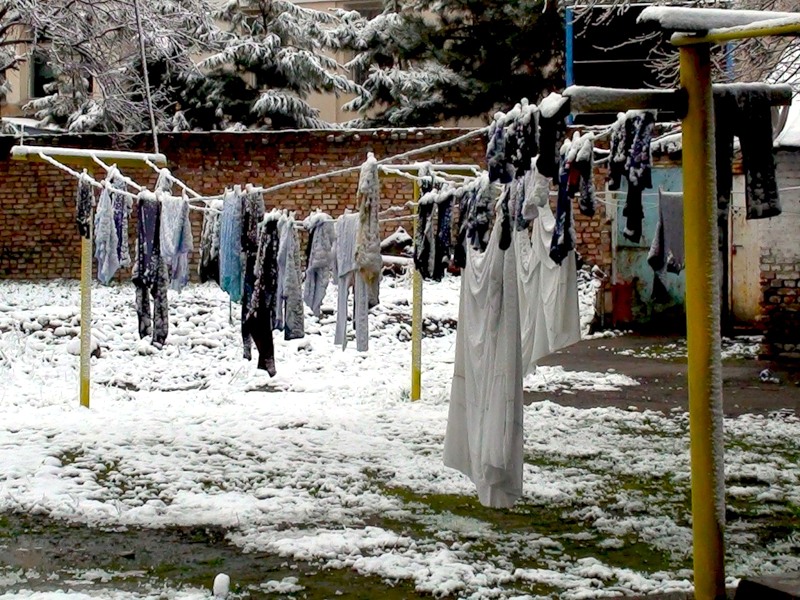If you walk along the streets in severe frost, you will see that people hang their laundry directly on the street to dry. And it doesn’t matter whether it’s a village yard or a city block - people do this everywhere, turning laundry into a solid block of ice. In fact, such an action is quite controversial, I would like to understand more deeply whether this makes sense or is it just some kind of human prejudices, signs and customs?
Does laundry dry like that?
It is important to understand that at negative temperatures, water molecules freeze and remain in the fabric. Anyone who knows physics will say that water will still escape into the environment. Yes, but this will not help the laundry dry in any way; a person will not notice any difference. Once you bring the fabric into a warm place, it will begin to thaw and release the water that is “preserved” inside.

This method is suitable if it is frosty outside only in the mornings - then the housewife will wash the clothes, hang them out in the morning, everything will freeze, and in the daytime it will thaw and dry. If the action of the sun is added to this, the result will be of the highest quality.
What's useful about this
The benefits of such an action are very ambiguous. Even after reading the information on the Internet, you can get confused among the opinions of experienced physicists and ordinary housewives who have been doing this for several generations and do not complain. However, you can also find very interesting thoughts that make you think about the true meaning of drying clothes in this way.

For example, some people express the opinion that bed mites, which live in our beds and our linens, remain in small quantities even after thorough washing. These are quite tenacious creatures that can survive washing and even lay offspring in the fibers of the fabric. The old method of hanging laundry out in the cold will help combat this. Under prolonged exposure to negative temperatures, all organisms that were in the fabric will die, giving the linen extraordinary freshness. It is necessary that the laundry be damp and hang outside for a long time - then every particle of the fabric will be exposed to the action.
How wet fabric behaves in the cold
Anyone who is at least somewhat familiar with a school physics course understands that wet fabric will freeze at subzero temperatures. Or rather, not the fabric itself, but the water molecules that are contained inside it. This makes linen and clothes very hard, like stone, because the water has turned into a solid state of aggregation - ice. In this state, clothes are not only difficult to fold neatly, they are almost impossible to remove from the dryer. Therefore, housewives often wash and hang things outside in the morning, when it is still cold, in order to remove everything in the afternoon, when it is warmer and the frost has subsided.

If you try to unbend an item removed from the dryer, you can hear a crunching sound - this is the breaking of the ice, which is now located between the fibers of the fabric.Many people are afraid at such moments of breaking something. This fear is quite justified, because the crunch when bending is really strong, and a lot of effort is required for this. However, it is extremely difficult to break the linen; to do this, you need to hang the wettest cloth outside, from which water literally flows. In addition, it should be extremely cold outside, like in winter in Siberia.
If you meet these conditions and try as hard as possible, then you can probably break the thing into several parts, split it. At a minimum, the laundry will definitely leave marks on itself: various mechanical damage, small torn areas, and sometimes holes in the fabric.
Is it worth doing this and why?
For many people, hanging wet laundry out in the cold is not only a habit, but even a family tradition - this is what grandmothers and great-grandmothers did. However, they did not complain about this drying method, things did not break and it does not cause any harm to health. In addition, you sleep very well on linen that is thoroughly frozen, clean, and dried - the frosty freshness is literally transferred into the fabric, providing a pleasant and comfortable sleep. The same thing happens with clothes, wearing them becomes more pleasant, a feeling of crystal purity and freshness appears.

There is a lot of controversy over whether this method is worth drying things. Someone may talk about the dangers of such a procedure, however, this has not been proven at all. There is probably some truth to this side of the barricade - you really need to be careful with delicate linen made of sensitive fabric, but, for example, an ordinary thick cotton sheet can easily withstand freezing. There will always be fans of frost drying, and you can understand them, because after a frost, laundry becomes as if new, having gone through all levels of cleaning.
Everyone decides for themselves how to dry their laundry and clothes. The most important thing is to do as you want and feel comfortable yourself, without paying attention to the opinions of other people and their discussions.


 1
1






Did the author not go to school?
or in physics a solid “two”?
All liquids, regardless of their state of aggregation, evaporate, only at different rates, and ice evaporates perfectly too. The stronger the frost, the faster both snow and ice evaporate, to the delight of the wipers: the main thing is that snow does not fall for as long as possible!